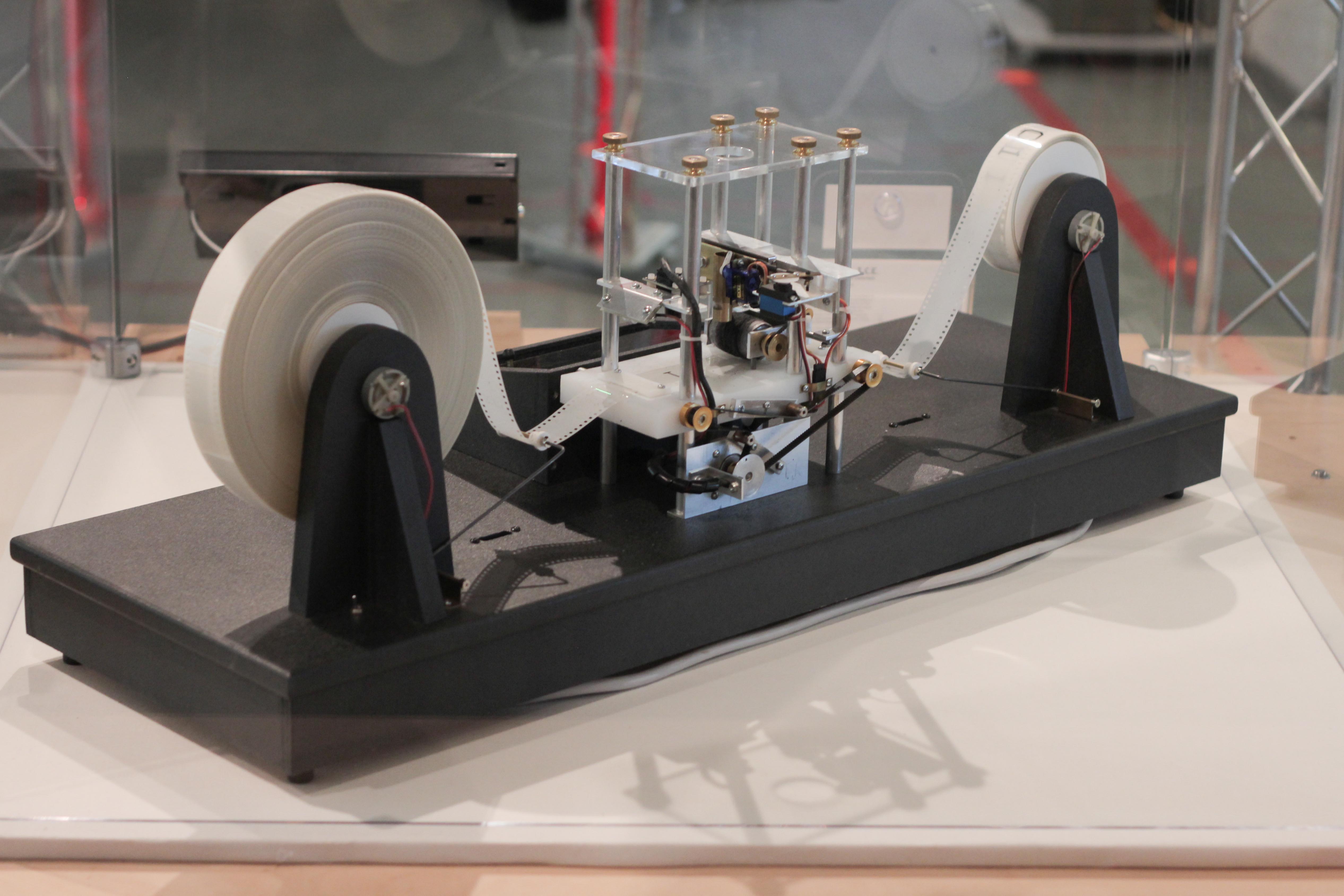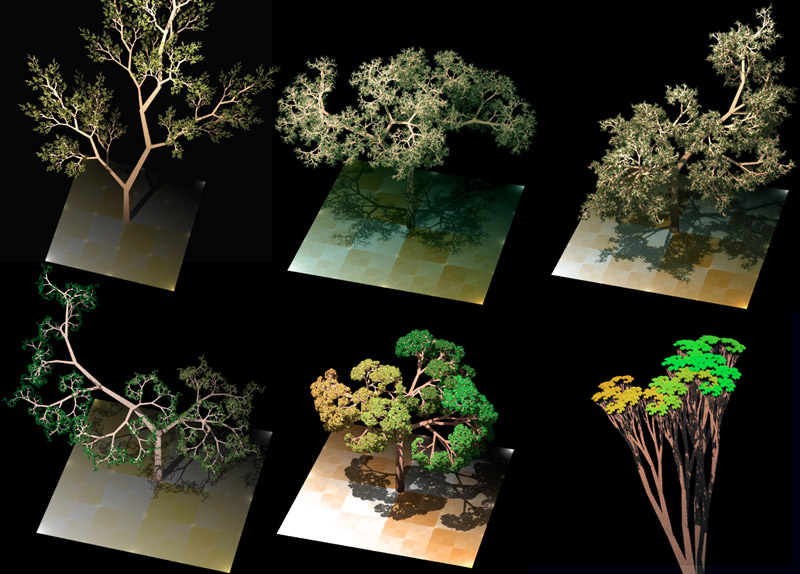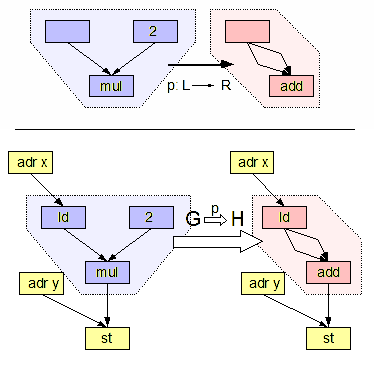|
Shape Grammar
Shape grammars in computation are a specific class of production systems that generate geometric shapes. Typically, shapes are 2- or 3-dimensional, thus shape grammars are a way to study 2- and 3-dimensional languages. Shape grammars were first introduced in a seminal article by George Stiny and James Gips in 1971.Stiny, G. & Gips, J. (1972). Shape grammars and the generative specification of painting and sculpture. In Information Processing 71, 1460–1465. North-Holland Publishing Company. The mathematical and algorithmic foundations of shape grammars (in particular, for linear elements in two-dimensions) were developed in "Pictorial and Formal Aspects of Shapes and Shape Grammars" (Birkhäuser Basel, 1975) by George Stiny. Applications of shape grammars were first considered in "Shape Grammars and their Uses" (Birkhäuser Basel, 1975) by James Gips. These publications also contain two independent, though equivalent, constructions showing that shape grammars can simulate Turing ... [...More Info...] [...Related Items...] OR: [Wikipedia] [Google] [Baidu] |
Production System (computer Science)
A production system (or production rule system) is a computer program typically used to provide some form of artificial intelligence, which consists primarily of a set of rules about behavior, but also includes the mechanism necessary to follow those rules as the system responds to states of the world. Those rules, termed productions, are a basic knowledge representation found useful in automated planning and scheduling, expert systems, and action selection. Productions consist of two parts: a sensory precondition (or "IF" statement) and an action ("THEN"). If a production's precondition matches the current State (computer science), state of the world, then the production is said to be ''triggered''. If a production's action is Execution (computers), executed, it has ''fired''. A production system also contains a database, sometimes called working memory, which maintains data about the current state or knowledge, and a rule interpreter. The rule interpreter must provide a mechanism ... [...More Info...] [...Related Items...] OR: [Wikipedia] [Google] [Baidu] |
George Stiny
George Stiny is an American design and computation theorist. He co-created shape grammars with James Gips. Stiny was educated at MIT and UCLA. He is currently a Professor in the Computation Group of the Department of Architecture at MIT. He was on the faculty at UCLA for fifteen years before joining the MIT Department of Architecture in 1996. He has also held appointments at the University of Sydney, the Royal College of Art (London), and the Open University The Open University (OU) is a Public university, public research university and the largest university in the United Kingdom by List of universities in the United Kingdom by enrolment, number of students. The majority of the OU's undergraduate .... Published works * Stiny, G. & Gips, J. (1972). Shape grammars and the generative specification of painting and sculpture. In Information Processing 71, pp. 1460–1465. North-Holland Publishing Companylink to article* Stiny, G. (1975). Pictorial and Formal Aspects of Sh ... [...More Info...] [...Related Items...] OR: [Wikipedia] [Google] [Baidu] |
James Gips
James Gips (died June 10, 2018) was an American technologist, academic, and author based in Boston. He was the John R. and Pamela Egan Professor of computer science and professor of information systems at Boston College.Profile at Boston College Gips’ research was focused around the use of technology to help people with disabilities live fuller lives. He was the co-inventor and principal developer of two assistive technologies, EagleEyes and Camera Mouse. Gips has written on a variety of topics including ethical robots, shape grammars and aesthetics. In 2007, Gips won the da Vinci Award for exceptional design and engineering achievements in accessibility and universal design. Gips died June 10, 2018, aged 72. Education After completing his B.S. in Humanities and Enginee ...[...More Info...] [...Related Items...] OR: [Wikipedia] [Google] [Baidu] |
Turing Machines
A Turing machine is a mathematical model of computation describing an abstract machine that manipulates symbols on a strip of tape according to a table of rules. Despite the model's simplicity, it is capable of implementing any computer algorithm. The machine operates on an infinite memory tape divided into discrete cells, each of which can hold a single symbol drawn from a finite set of symbols called the alphabet of the machine. It has a "head" that, at any point in the machine's operation, is positioned over one of these cells, and a "state" selected from a finite set of states. At each step of its operation, the head reads the symbol in its cell. Then, based on the symbol and the machine's own present state, the machine writes a symbol into the same cell, and moves the head one step to the left or the right, or halts the computation. The choice of which replacement symbol to write, which direction to move the head, and whether to halt is based on a finite table that spec ... [...More Info...] [...Related Items...] OR: [Wikipedia] [Google] [Baidu] |
Chomsky Hierarchy
The Chomsky hierarchy in the fields of formal language theory, computer science, and linguistics, is a containment hierarchy of classes of formal grammars. A formal grammar describes how to form strings from a formal language's alphabet that are valid according to the language's syntax. The linguist Noam Chomsky theorized that four different classes of formal grammars existed that could generate increasingly complex languages. Each class can also completely generate the language of all inferior classes (set inclusive). History The general idea of a hierarchy of grammars was first described by Noam Chomsky in "Three models for the description of language" during the formalization of transformational-generative grammar (TGG). Marcel-Paul Schützenberger also played a role in the development of the theory of formal languages; the paper "The algebraic theory of context free languages" describes the modern hierarchy, including context-free grammars. Independently, alongside linguis ... [...More Info...] [...Related Items...] OR: [Wikipedia] [Google] [Baidu] |
L-System
An L-system or Lindenmayer system is a parallel rewriting system and a type of formal grammar. An L-system consists of an alphabet of symbols that can be used to make strings, a collection of production rules that expand each symbol into some larger string of symbols, an initial "axiom" string from which to begin construction, and a mechanism for translating the generated strings into geometric structures. L-systems were introduced and developed in 1968 by Aristid Lindenmayer, a Hungarian theoretical biologist and botanist at the University of Utrecht. Lindenmayer used L-systems to describe the behaviour of plant cells and to model the growth processes of plant development. L-systems have also been used to model the morphology of a variety of organisms and can be used to generate self-similar fractals. Origins As a biologist, Lindenmayer worked with yeast and filamentous fungi and studied the growth patterns of various types of bacteria, such as the cyanobacteria '' Anabaena ... [...More Info...] [...Related Items...] OR: [Wikipedia] [Google] [Baidu] |
Parameter
A parameter (), generally, is any characteristic that can help in defining or classifying a particular system (meaning an event, project, object, situation, etc.). That is, a parameter is an element of a system that is useful, or critical, when identifying the system, or when evaluating its performance, status, condition, etc. ''Parameter'' has more specific meanings within various disciplines, including mathematics, computer programming, engineering, statistics, logic, linguistics, and electronic musical composition. In addition to its technical uses, there are also extended uses, especially in non-scientific contexts, where it is used to mean defining characteristics or boundaries, as in the phrases 'test parameters' or 'game play parameters'. Modelization When a system theory, system is modeled by equations, the values that describe the system are called ''parameters''. For example, in mechanics, the masses, the dimensions and shapes (for solid bodies), the densities and t ... [...More Info...] [...Related Items...] OR: [Wikipedia] [Google] [Baidu] |
Computer Aided Design
Computer-aided design (CAD) is the use of computers (or ) to aid in the creation, modification, analysis, or optimization of a design. This software is used to increase the productivity of the designer, improve the quality of design, improve communications through documentation, and to create a database for manufacturing. Designs made through CAD software help protect products and inventions when used in patent applications. CAD output is often in the form of electronic files for print, machining, or other manufacturing operations. The terms computer-aided drafting (CAD) and computer-aided design and drafting (CADD) are also used. Its use in designing electronic systems is known as ''electronic design automation'' (''EDA''). In mechanical design it is known as ''mechanical design automation'' (''MDA''), which includes the process of creating a technical drawing with the use of computer software. CAD software for mechanical design uses either vector-based graphics to depict t ... [...More Info...] [...Related Items...] OR: [Wikipedia] [Google] [Baidu] |
Computer-aided Architectural Design
Computer-aided architectural design (CAAD) software programs are the repository of accurate and comprehensive records of buildings and are used by architects and architectural companies for architectural design and architectural engineering. As the latter often involve floor plan designs CAAD software greatly simplifies this task. History The first attempts to computerize the architectural design date back to the 1960s: * CRAFT (1963) was one of the first systems to automate an architectural design task (optimizing the layout of a manufacturing plant); * Sketchpad (1963) was the precursor of the computer-aided design programs, it computerized the drawing and allowed setting of parametric relationships between objects via a graphical user interface; * DAC-1 (1963-1964) was a CAD-like program developed by General Motors. The first attempts to separate the CAAD from generic CAD were made in the 1970s. The practical commercial tools for architecture design and building informati ... [...More Info...] [...Related Items...] OR: [Wikipedia] [Google] [Baidu] |
Formal Grammar
A formal grammar is a set of Terminal and nonterminal symbols, symbols and the Production (computer science), production rules for rewriting some of them into every possible string of a formal language over an Alphabet (formal languages), alphabet. A grammar does not describe the semantics, meaning of the strings — only their form. In applied mathematics, formal language theory is the discipline that studies formal grammars and languages. Its applications are found in theoretical computer science, theoretical linguistics, Formal semantics (logic), formal semantics, mathematical logic, and other areas. A formal grammar is a Set_(mathematics), set of rules for rewriting strings, along with a "start symbol" from which rewriting starts. Therefore, a grammar is usually thought of as a language generator. However, it can also sometimes be used as the basis for a "recognizer"—a function in computing that determines whether a given string belongs to the language or is grammatical ... [...More Info...] [...Related Items...] OR: [Wikipedia] [Google] [Baidu] |
Graph Rewriting
In computer science, graph transformation, or graph rewriting, concerns the technique of creating a new graph out of an original graph algorithmically. It has numerous applications, ranging from software engineering ( software construction and also software verification) to layout algorithms and picture generation. Graph transformations can be used as a computation abstraction. The basic idea is that if the state of a computation can be represented as a graph, further steps in that computation can then be represented as transformation rules on that graph. Such rules consist of an original graph, which is to be matched to a subgraph in the complete state, and a replacing graph, which will replace the matched subgraph. Formally, a graph rewriting system usually consists of a set of graph rewrite rules of the form L \rightarrow R, with L being called pattern graph (or left-hand side) and R being called replacement graph (or right-hand side of the rule). A graph rewrite rule is applie ... [...More Info...] [...Related Items...] OR: [Wikipedia] [Google] [Baidu] |
L-system
An L-system or Lindenmayer system is a parallel rewriting system and a type of formal grammar. An L-system consists of an alphabet of symbols that can be used to make strings, a collection of production rules that expand each symbol into some larger string of symbols, an initial "axiom" string from which to begin construction, and a mechanism for translating the generated strings into geometric structures. L-systems were introduced and developed in 1968 by Aristid Lindenmayer, a Hungarian theoretical biologist and botanist at the University of Utrecht. Lindenmayer used L-systems to describe the behaviour of plant cells and to model the growth processes of plant development. L-systems have also been used to model the morphology of a variety of organisms and can be used to generate self-similar fractals. Origins As a biologist, Lindenmayer worked with yeast and filamentous fungi and studied the growth patterns of various types of bacteria, such as the cyanobacteria '' Anabaena ... [...More Info...] [...Related Items...] OR: [Wikipedia] [Google] [Baidu] |





